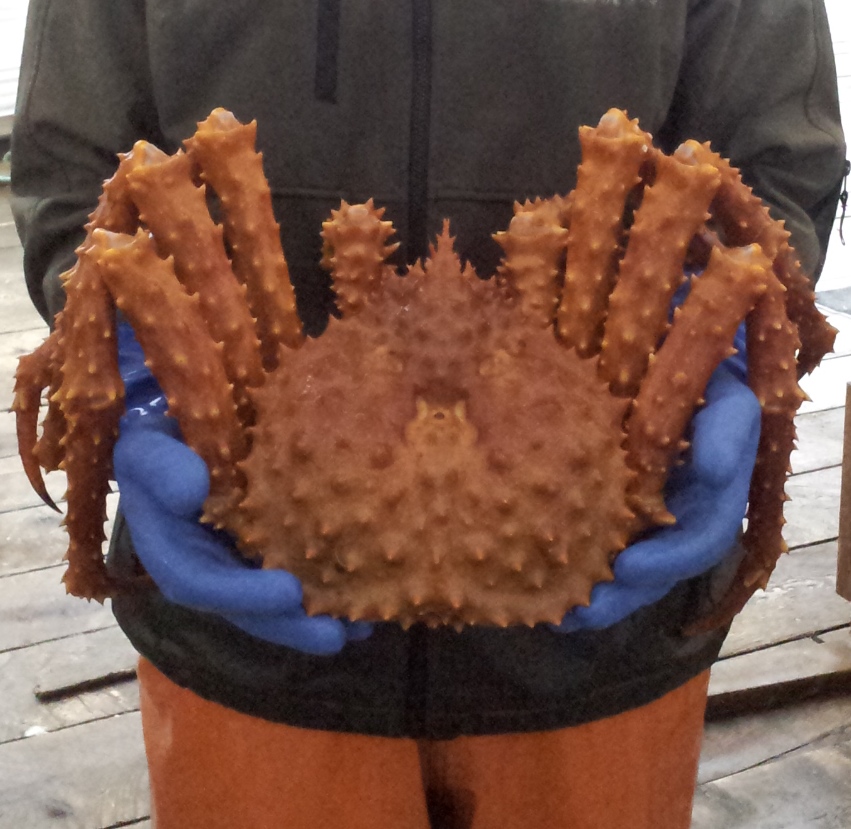This article has been updated with broader language relating to what HB41 would allow ASMI to promote: aquatic farm products.
Alaska lawmakers are considering legalizing hatcheries to boost wild shellfish stocks like king crab and mussels. It’s an idea that’s been around since at least the 1990s, and the goal would be to replicate the economic success of Alaska’s enhanced salmon fisheries.
But some scientists say they’re worried about what hatchery crab and other species could do to natural populations.

Throughout Alaska’s waters, shellfish populations have been in decline for decades — decimated by overfishing in the 1980s and by changing ocean environments in the years since.
Bristol Bay’s world-renown sockeye salmon fishery was a bright spot in a dismal statewide salmon harvest last year. But its red king crab fishery is in steep decline.
“There’s quite a lot of concern that this [Bristol Bay red king crab] fishery could close as early as this year,” says Ginny Eckert. She’s a professor of fisheries at the University of Alaska Fairbanks. Eckert spoke at a legislative hearing earlier this month in favor of a bill that supporters say could help re-animate shellfish populations statewide, including in Bristol Bay.
The Dunleavy administration supports the initiative. Sam Rabung, the commercial fisheries director for the Alaska Department of Fish & Game, has a background in mariculture. He says allowing hatcheries for crab and other commercially harvested wild species could help state fisheries managers in Alaska.
“The only tool the ADF&G has at this time to help those stocks recover is to keep the fisheries closed, which we have done for over 35 years,” Rabung said. “With the passage of SB64, there’ll be another tool to try.”
Sponsored by Kodiak Republican Gary Stevens, Senate Bill 64 would specifically allow shellfish hatcheries in the state. Proponents say investors could then grow and release shellfish like clams and crab to boost statewide shellfish populations… and harvests.
There’s already mariculture in Alaska on state leases. Aquatic farms produce Pacific oysters, blue mussels and several species of kelp. But Rabung says mariculture hatcheries would be a form of fishery enhancement for species released and caught in the wild.
“This entails the restoration, rehabilitation or enhancement of natural production, and benefits common property fisheries, subsistence or personal use, sport and commercial rather than private ownership,” Rabung explained.
Ketchikan independent Rep. Dan Ortiz sponsored the House version of the legislation.
“It’s all in the name of taking advantage of what has so far been an untapped resource in terms of the oceans and the shorelines of Southeast Alaska and of coastal Alaska,” Ortiz said. “[Those areas] have always been ripe for this kind of thing.”
Ortiz says new mariculture development could be a significant economic driver: “The recognition that we need to diversify our fisheries industry even more as other fisheries start to maybe encounter problems — I guess there hasn’t been the need, necessarily, up to this point in history. And now that there’s the need, we’re providing the pathway for that need.”
But there are some who worry how releasing juvenile shellfish species would affect the larger ecosystem.
University of Alaska Fairbanks fisheries professor Milo Adkison wrote a letter warning lawmakers that juvenile crabs aren’t like young salmon that mainly return to the same rivers and streams each year. Crab go wherever.
“The big problem with the crab hatcheries and makes them a lot more risky is that they are not going to segregate from the wild stocks,” Adkison said. “They’re not going to congregate in the spot where you can harvest them without also harvesting the wild-born animals, and they’re not going to be reproductively isolated from the wild crabs as well. Basically, you’re going to have a mixture of wild and hatchery-born crabs.”
Adkison told KSTK in an interview that he knows mariculture has the potential to benefit fishing communities. But he wants to make sure the state doesn’t harm its marine resources.
“Based on the evidence and the research we have right now, in my opinion, it’s much too risky to proceed with a crab hatchery program,” he said. “But further research could possibly change my mind.”
Fish and Game’s Sam Rabung says even if the bill becomes law, don’t expect a gold rush-type stampede for shellfish hatchery permits. He says his agency would be deliberate and conservative with an emphasis on natural productivity.
“Alaska already has the most stringent aquaculture guidance in the world,” Rabung reassured legislators. “And it’s held up as the example of how to do it right, in a manner that minimizes negative effects on natural production and maintains the sustainability of natural production and the fisheries and people who depend on that. That will not change.”
The legislation would also allow the Alaska Seafood Marketing Institute to throw its weight behind aquatic farm products, and would allow Alaska’s nonprofit salmon hatcheries to get into the mariculture business.
Both versions of the bill — House Bill 41 and Senate Bill 64 — are still being heard and debated by legislative committees. A date on a floor vote hasn’t been set.
Get in touch with KSTK at news@kstk.org or (907) 874-2345.











